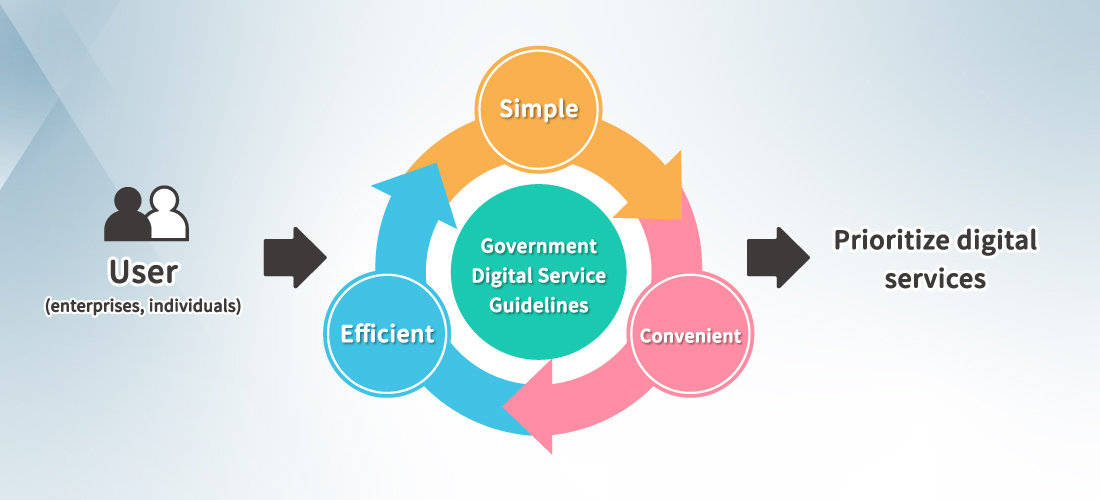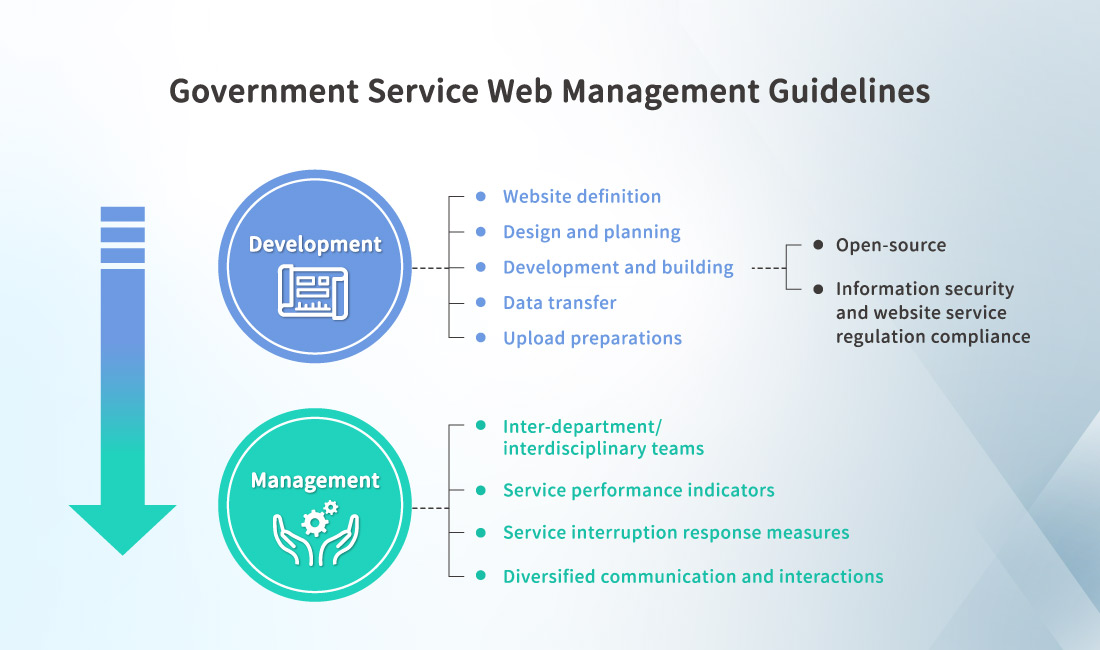Government Digital Service Guidelines and Web Management Guidelines
As internet-based digital technology matures, services that traditionally required the public to apply in-person have gradually begun offering digital application processes that allow the public to apply online. Examples include household registrations, tax filings, and motor vehicle registrations. In order to help Taiwanese government agencies develop consolidated cross-agency services and implement people-centric service designs, thus achieving the vision of a smart government, the government has set "Government Digital Service Guidelines" and "Government Web Management Guidelines." Coming from the standpoint of the digital service life cycle, the two guidelines lead Taiwanese government agencies at all levels to prioritize users’ needs as the focus of digital service designs. They present important principles and precautions through a holistic structure and serve as a reference for government agencies as they develop digital services and manage content.

13 Government Digital Service Guidelines:
- Understand users’ needs
- Build a multidisciplinary collaboration mechanism
- Plan multiple service channels
- Adopt continuous improvement methods
- Ensure resources required for services
- Evaluate tools and systems
- Highlight information security, privacy and convenience
- Prioritize openness
- Test continuously and deploy services rapidly
- Make outage response plans
- Follow the ease-of-use principle
- Encourage digital use
- Measure service performance
Additionally, the "Government ICT Application Program Self-Assessment," "Government Digital Service Self-Assessment," and "Suggestions for Government Digital Service Development Supporting Measures" allow Taiwanese government agencies to assess which issues to address as they develop digital services.

10 Government Web Management Guidelines:
- Assess the goal of websites by examining the website’s mission, audience, and means.
- Ensure the usability of websites, provide concise and convenient user interfaces and procedures.
- Prioritize open-source code tools and systems when building websites, adopt development environments compatible with international standards.
- Confirm compliance with regulations relating to information security and websites services, such as the Cyber Security Management Act, Personal Data Protection Act, Freedom of Government Information Law, and Accessible Web Development Guidelines.
- Consider the continuity of information and services provided; if inheriting information and services from old websites, set migration plans and follow through.
- Set plans prior to going online, avoid interrupting organizations’ operations and affecting the use of websites.
- Form inter-department or interdisciplinary teams for website operations, clearly designate each member’s responsibilities and mechanisms for operation and management.
- Set indicators to measure service performance, collect and analyze website usage data as a reference for future website management and adjustment needs.
- Set response measures for outages according to the type and importance of websitesites; regularly review backup data to ensure integrity and usability to prevent service interruption in case of emergencies.
- Assess government agency type and services offered, make use of social media to provide diverse means of communication and interaction.
There are 30 additional detailed guidelines for Taiwanese government agencies to reference when designing websites.